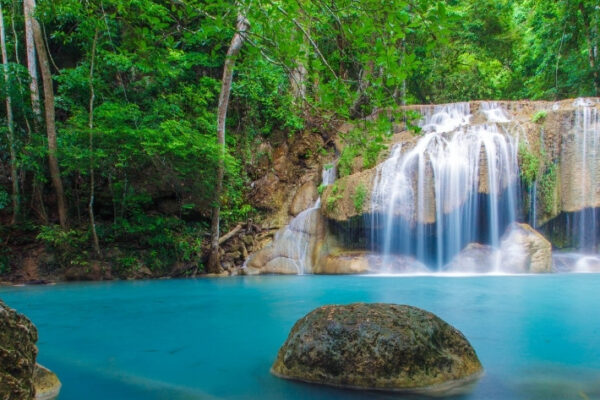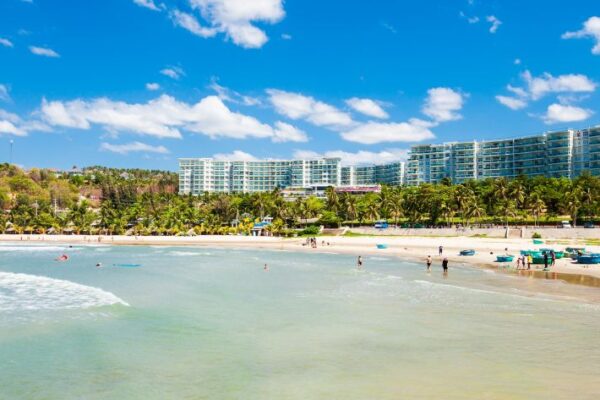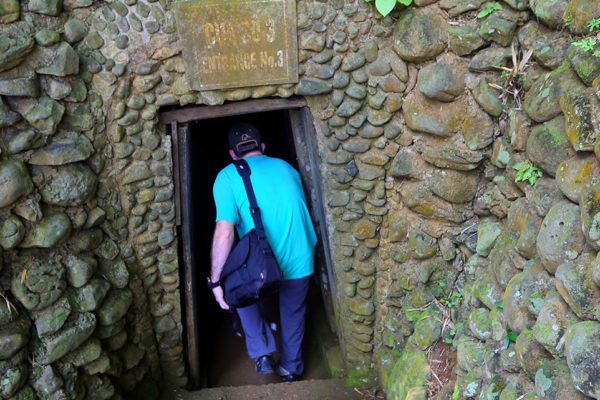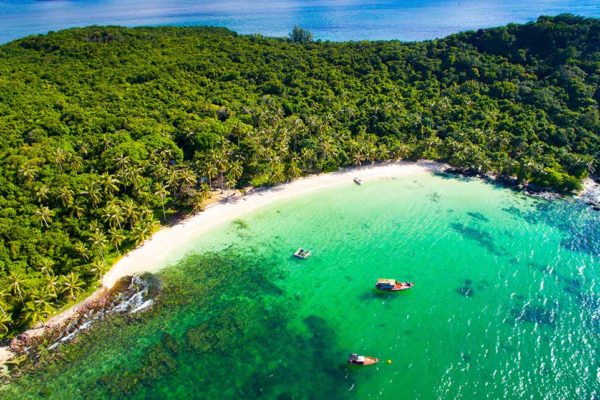Hai Van Pass: Vietnam’s Majestic Coastal Corridor
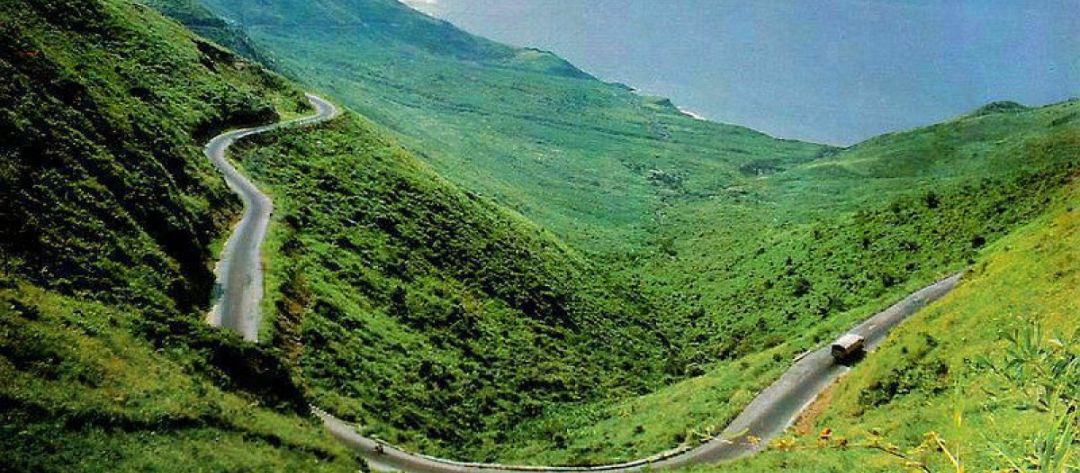
Journey with us as we traverse the legendary Hai Van Pass, a stretch of road where history and nature entwine in Vietnam’s spectacular coastal landscape. From ancient tales to mesmerizing views, every curve of this pass promises an adventure that resonates with both the heart and soul.
Overview Of Hai Van Pass
The Hai Van Pass spans approximately 21 kilometers, winding its way through the Annamite Range, which separates Thua Thien-Hue Province and Da Nang City. Serving as a natural border, this pass isn’t merely a road—it’s a testament to Vietnam’s diverse landscapes and storied past.
Its strategic location made it a significant point for military control in historical conflicts and a vital trade route linking the north and south of Vietnam. Geographically, the Hai Van Pass offers a unique mix of misty mountains juxtaposed against a stunning ocean backdrop. This blend of history and nature elevates the Hai Van Pass from a simple road to a journey that enriches both the mind and the soul.
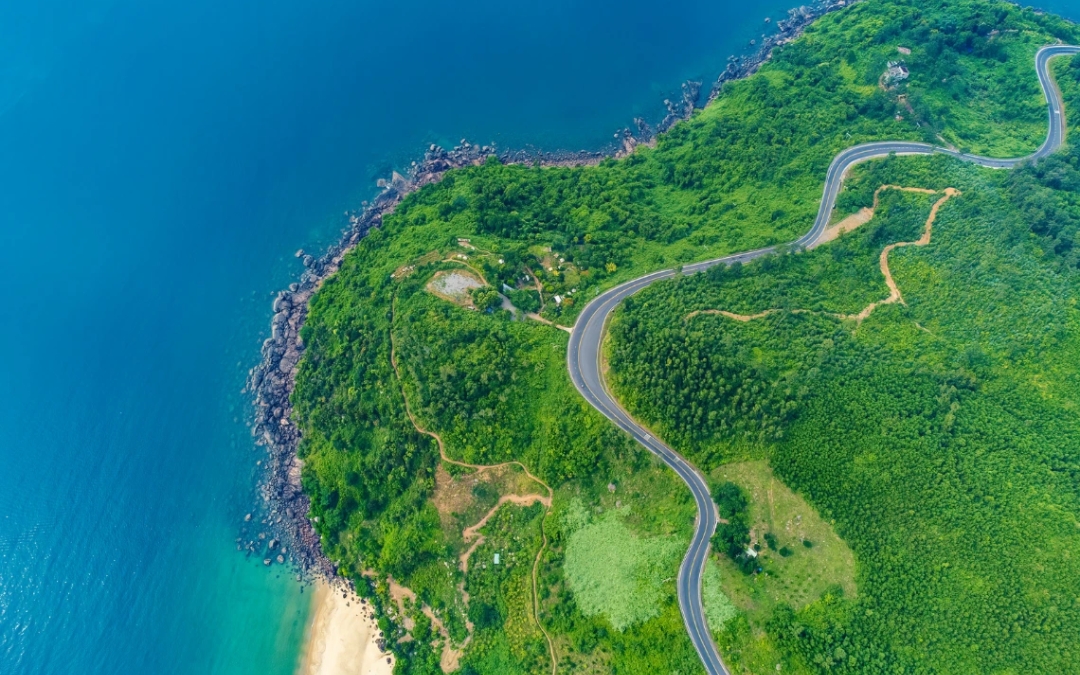
Hai Van Pass offers an unforgettable mix of history, nature, and adventure.
Why You Should Visit Hai Van Pass in Da Nang?
The Historic Significance Of Hai Van Pass
Hai Van Pass is so much more than a scenic stretch of road, a testament to Vietnam’s complex tapestry of history. Back in the early 14th century, around 1306, the landscape bore witness to a royal union. Che Man, a king from the kingdom of Cham Pa, gave the lands of O and Ri to the Vietnamese royalty as an engagement present for Princess Huyen Tran, the daughter of King Tran Nhan Tong. This gesture marked Hai Van Pass as a crucial boundary, separating the realms of Dai Viet and Cham Pa.
On the pass’s peak, a grand ancient gate stands tall, a remnant of a time when it marked the border between these two powerful kingdoms. Its stone walls and archways whisper tales of diplomacy, trade, and sometimes, conflict.
Fast forward to the Vietnamese-American War, and the Pass took on a somber tone. Dubbed the ‘Street Without Joy’, it served as a poignant link between Hue and Da Nang, cities that bore the heavy scars of war. This pass, therefore, encapsulates moments of love, unity, and strife, making it a must-visit for anyone keen on understanding Vietnam’s multifaceted history.
The architecture along the pass also tells a story. Take the Hai Van Gate, for instance. This sturdy structure, with its weathered stones and age-old inscriptions, was built as a marker of power and protection. It’s like a silent guardian, watching over the Pass for centuries. Then there’s the Tam Quan Gate, another historic gem. Its intricate designs and craftsmanship speak of the artistry and skill of the builders of yesteryears.
>> See Tour: World Heritage Sites of Vietnam
The Enigmatic Beauty Of Hai Van Pass
- Ocean’s Embrace
The Hai Van Pass is blessed with the mesmerizing presence of the ocean. As you travel, the deep blue waters stretch endlessly, shimmering under the sun. Waves rhythmically kiss the shores, creating a calming soundtrack to your journey.
- Majestic Mountains
On the opposite side, green mountains rise tall and proud. Their peaks, often shrouded in a soft mist, evoke a sense of mystery and wonder. These natural giants stand as guardians of the Pass, adding to its grandeur.
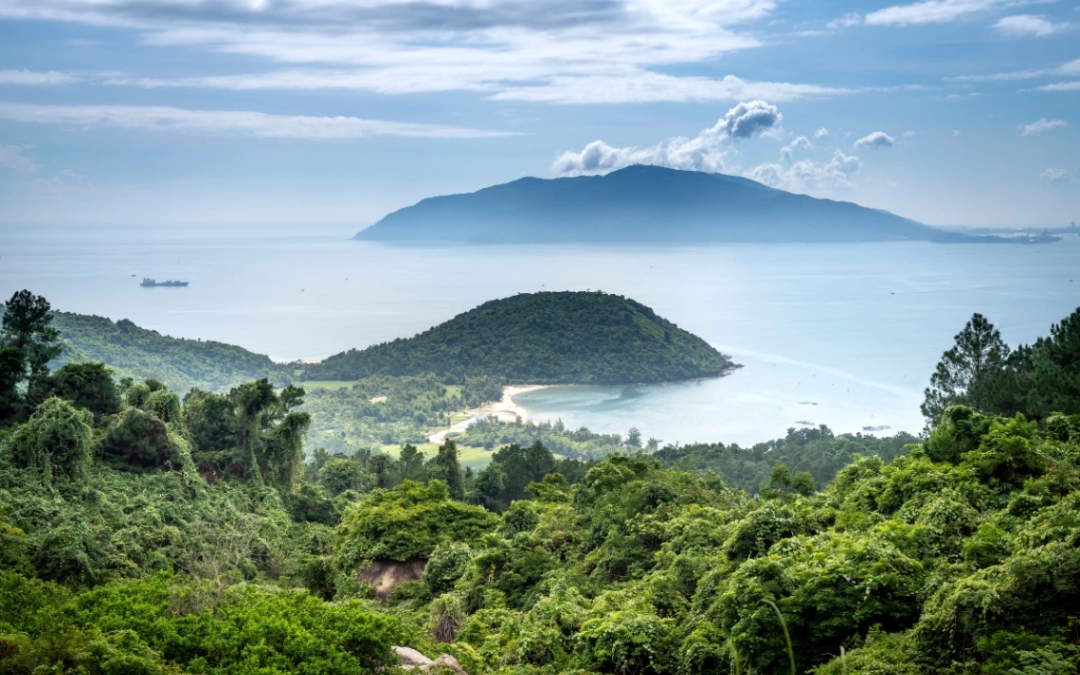
The majestic mountains surrounding Hai Van Pass offer stunning views.
- Flora and Fauna
The region’s biodiversity is truly a treat. Dense forests play host to a variety of creatures, from chirping birds flaunting vibrant feathers to smaller animals rustling through the underbrush. This rich tapestry of life brings animation to the pass, making every twist and turn an exploration.
- Moments in Time
Hai Van’s beauty isn’t static; it’s a dynamic display of nature’s wonders. From the gentle dance of clouds over mountain tops to the breathtaking hues of sunrise over the waters, every moment offers a new visual delight. It’s a place where each glance can capture a memory, urging travelers to immerse themselves in the present.
Scenic Reputation with Instagram-worthy Status
Renowned as one of the most breathtaking hillside routes in Vietnam, the Hai Van Pass has gained international fame for its unrivaled scenic beauty. Nicknamed the “Ocean Cloud Pass,” it offers a mesmerizing contrast between misty mountain tops and the endless stretch of blue sea. On cloudy days, the road seems to disappear into a sea of drifting fog, creating an atmosphere both dramatic and mysterious.
This legendary route has received global recognition: The Guardian hailed it as one of the “great scenic drives around the world,” while Top Gear’s Jeremy Clarkson famously praised it as a “deserted ribbon of perfection.” Travelers are often left in awe by the exhilarating curves and open panoramas, making it a top destination for both thrill-seekers and photographers.
For those chasing Instagram-worthy shots, the Hai Van Pass does not disappoint. Sweeping views reveal Da Nang’s coastline, the Son Tra Peninsula, Cham Islands, and white sandy beaches that glitter under the sun. Iconic stops like Hai Van Quan with its timeworn stone walls, Cu Rua Rock overlooking the sea, and the photogenic “Deadly U-turn” provide striking backdrops. Even small, unassuming details—a lone pine tree on the roadside, a rustic bridge cloaked in greenery, or the haunting quiet of untouched forest—add to the pass’s photogenic charm.
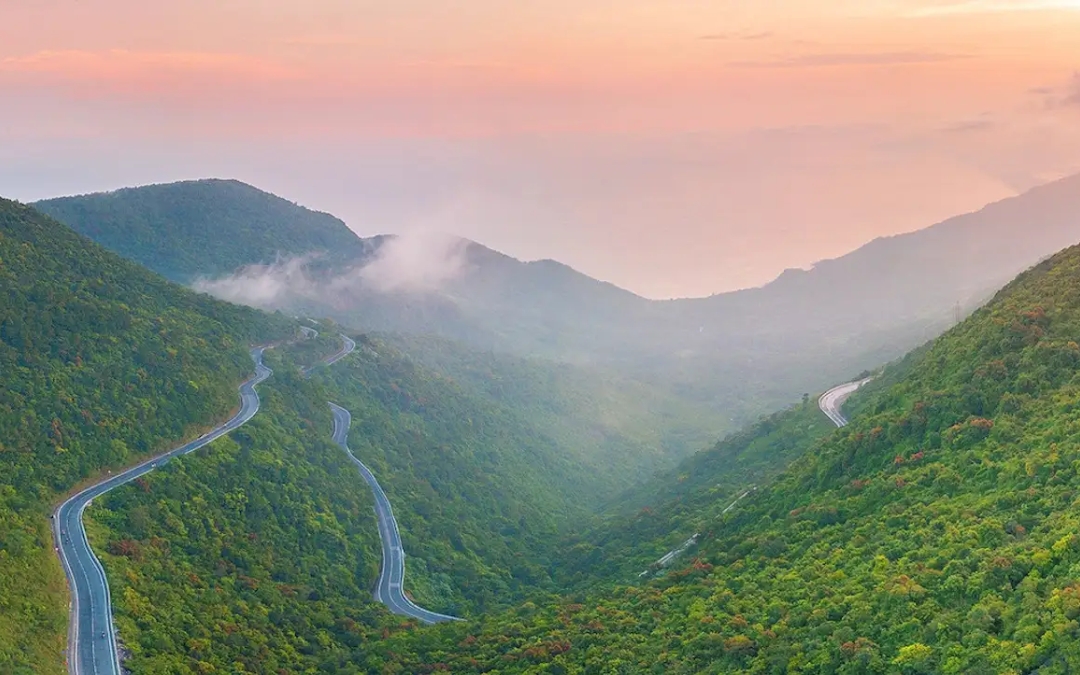
Known as the “Ocean Cloud Pass,” Hai Van Pass blends stunning mountain and sea views.
Unique Journey Through The Hai Van Pass
- The Dual Sensations: Wonder and Caution
Every traveler venturing through Hai Van Pass is greeted with a cocktail of emotions. The sheer amazement of passing through clouds competes with a gripping fear when faced with the treacherous bends of the road. As you navigate the hairpin curves, anticipation builds until you reach the pinnacle of the Pass. If luck and weather permit, you’re gifted with panoramic views stretching both North and South.
Yet, the Pass is not just a natural wonder but a historical monument. French fortifications, later used by South Vietnamese and Americans, stand as silent guardians of the past. However, a word to the wise: while offering breathtaking views, the crest also hosts a brigade of persistent souvenir sellers.
- Testing Your Steering Prowess
The road is not just a physical journey but a test of one’s driving mettle. With its unexpected twists and turns, Hai Van Pass is akin to a beautiful challenge, beckoning every traveler to prove their worth. The pass, touted as Vietnam’s largest frontier post, boasts of its historical significance with the engraving “De Nhat Hung Quan” – the most colossal frontier post – at the Thai Temple. As you reach the zenith, remnants of an old gateway greet you, with inscriptions that proudly declare its grandeur.
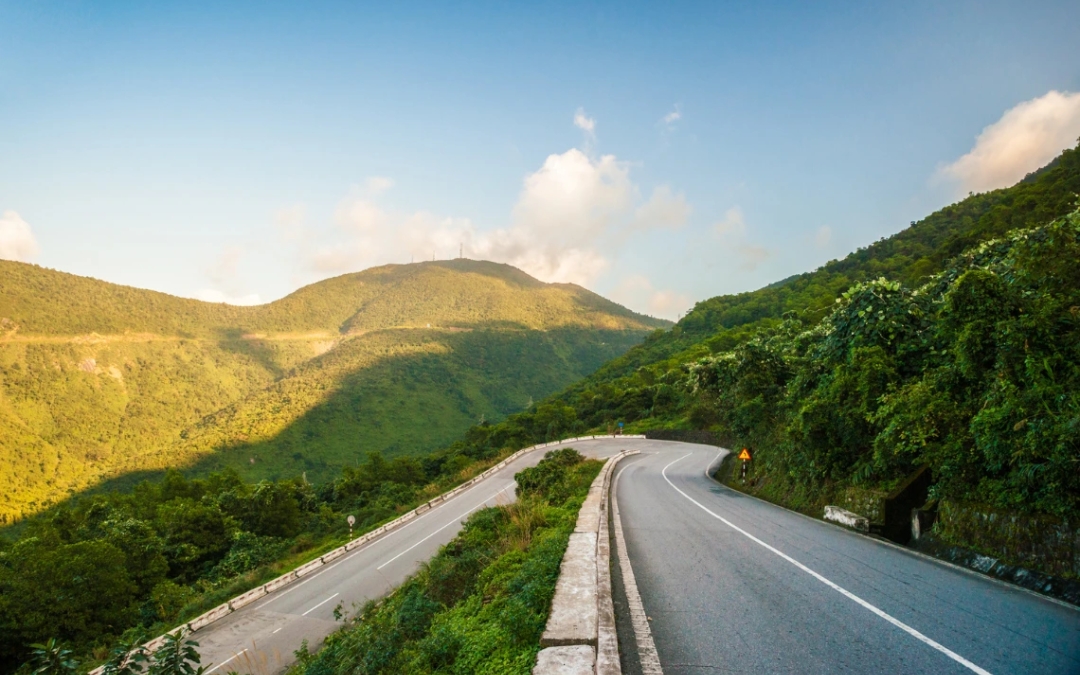
The dramatic U-turn on Hai Van Pass delivers an exhilarating and scenic experience.
- Solitude Amidst Scenery
One of the pass’s unique charms is the profound sense of solitude it offers. Amidst the vast expanses of forests and the serene blue sea, an unmatched peace engulfs the traveler. Unlike the bustling Bao Loc mountain pass populated with villages, Hai Van’s allure is its untouched natural beauty, starkly contrasting the former’s vibrancy.
- Ascending to the Peak
The road, while beautiful, is notorious for its dangers, evident from the frequent warning signs. But as you approach the peak, the scene shifts dramatically. The tranquil isolation gives way to a bustling hub of foreign tourists, each eager to capture memories. The juxtaposition of ancient ruins and modern-day hustle, especially with tourists navigating the rugged steps of Hai Van Quan, is a sight to behold. And for those who reach the summit, the views of Danang, Son Tra Peninsula, and the vast beaches are simply unparalleled.
How to Get to Hai Van Pass
The Best Vehicle Options
Traveling the Hai Van Pass is an unforgettable experience, and the choice of vehicle shapes your journey. Whether you crave adrenaline, comfort, or convenience, here are the best ways to explore this legendary coastal road:
- Motorbike or scooter (Self-driving): For adventure seekers, riding a motorbike is the most exhilarating option. Rentals cost around $20 per day, often including helmets, phone holders, and even luggage transfer. Riders need a valid license and an International Driving Permit, along with solid skills and proper travel insurance.
- Easy rider motorbike tour: If you love the thrill but prefer not to drive, hop on the back of an Easy Rider with a local guide. Prices start at $50 per person for a one-way trip, including guide, lunch, entrance fees, and luggage transfer. Guides share stories, stop at hidden viewpoints, and make it easier for you to enjoy the scenery and take photos.
- Jeep tour: Perfect for families or groups, jeep tours combine comfort and adventure. With up to five passengers per jeep, you’ll enjoy fresh air, open views, and camaraderie. Costs begin at $84 per person and usually include a driver, guide, lunch, and luggage transfer.
- Train: The train ride between Da Nang and Hue offers some of Vietnam’s most stunning coastal scenery. The highlight is the 20 km stretch between Kim Lien and Lang Co stations. A seat costs about $15, while berths range from $19 to $25. Be sure to sit on the coastal side (right when going north, left when going south) for the best views.
- Taxi or private car: For comfort and flexibility, taxis or private cars are excellent choices. Prices vary, but XanhSM electric taxis and local car rentals offer eco-friendly and convenient options.
- Bicycle: Cycling the Hai Van Pass is a serious challenge reserved for fitness enthusiasts. The climb is 11 km with a 7% gradient, demanding stamina and preparation.

Experience Hai Van Pass’ charm from the comfort of the train.
The Best Route to Reach Hai Van Pass
The Hai Van Pass, offering a serene coastal journey away from the bustling National Highway 1, serves as a scenic connector between the historic cities of Hoi An, Hue, and the vibrant Danang. For those eager to experience its beauty, there are two predominant routes to consider:
1. Southern Route: From Hoi An or Da Nang
The Convenient Pathway: If your journey starts in Hoi An, you’ll traverse through Danang en route to the Hai Van Pass, ultimately leading to Hue. Located just over 25 kilometers from the heart of Danang, this southern approach to the pass offers a relatively straightforward ride, especially for those already in or around Danang.
2. Northern Route: From Hue
The Adventurous Trail: Although proximity to Danang simplifies access to the Hai Van Pass, those stationed in Hue can also venture to this natural marvel with relative ease.
From Hue, the pass stands a little over 70 kilometers away. The most direct route involves starting at Hue’s city center and following National Highway 1 until reaching Lang Co Town. However, consider the coastal route for a more scenic journey, especially if you’re coming from Danang. This path showcases mesmerizing vistas of the Pho Loi River, the Thuan An Peninsula, quaint fishing towns, the refreshing Elephant Spring, the diverse Bach Ma National Park, and the serene Lang Co Bay.
Whichever route you choose, the journey to the Hai Van Pass promises a blend of natural beauty and cultural insights, making the travel as rewarding as the destination itself.

A motorbike ride through Hai Van Pass reveals incredible landscapes.
>> Read More: Transportation in Vietnam – A Comprehensive Guide for Tourists
Exploring Beyond: Nearby Attractions
Lang Co Beach
Just beyond the northern reaches of the pass lies Lang Co Beach, a haven of serenity. With its pristine sands and tranquil waters, it’s the perfect spot to relax after the exhilarating drive through the pass. Whether you’re in the mood for a leisurely stroll or simply want to listen to the rhythmic lapping of waves, Lang Co promises a peaceful retreat.
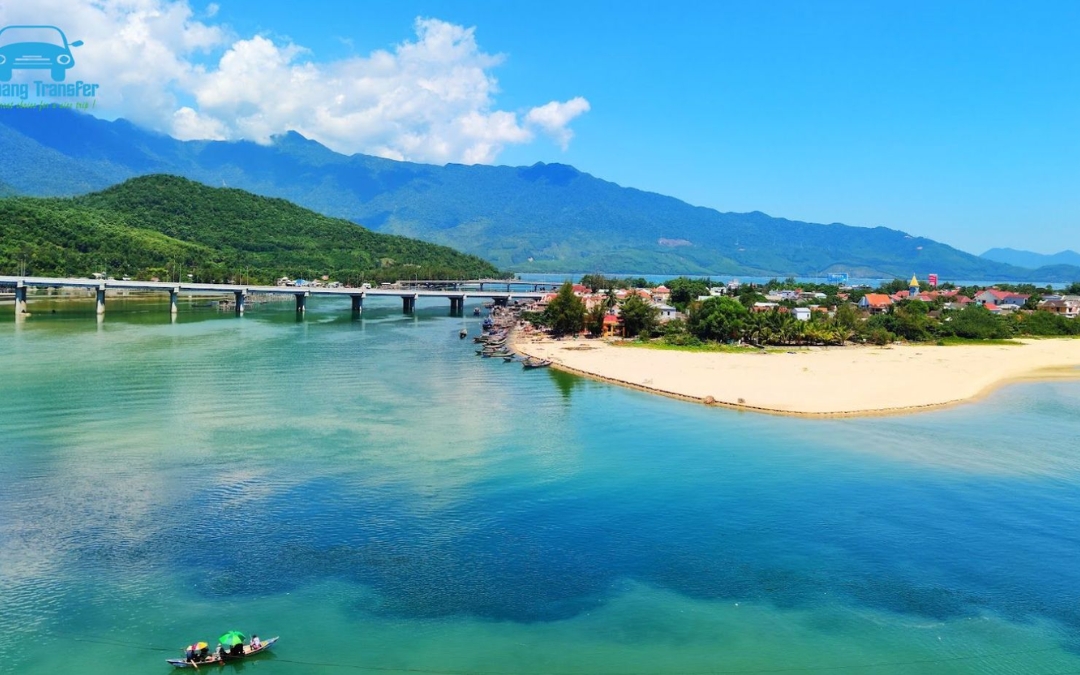
Lang Co Beach is perfect for unwinding with breathtaking views.
Bach Ma National Park
For nature enthusiasts, Bach Ma National Park is a treasure trove. A short drive from the Pass, this park boasts a rich biodiversity. Wander through its trails, and you might spot a plethora of bird species or even some elusive wildlife. Whether you’re trekking up its scenic viewpoints or immersing yourself in bird-watching, Bach Ma is a celebration of nature at its best.
Da Nang and Hue
Not far from the pass are the vibrant cities of Da Nang and Hue. With its modern skyscrapers and golden beaches, Da Nang offers a mix of urban charm and seaside relaxation. Hue, on the other hand, is a historical gem, home to ancient palaces and temples that tell tales of Vietnam’s royal past.
>> Read More: Central Vietnam Itinerary – A Luxurious Escapes of Heritage and Relaxation
Safety and Best Time to Travel the Hai Van Pass
Safety on the Hai Van Pass
The Hai Van Pass is well-paved and generally safe, but its winding curves and sudden blind corners require caution. During the rainy season (October–February), heavy downpours often make the road slippery, while dense fog can obscure visibility and increase risk of landslides.
Novice riders may find these conditions challenging, so it is strongly advised to wear proper safety gear, have valid travel insurance, and consider joining an Easy Rider motorbike tour if unsure about self-driving.
Best Time to Travel the Hai Van Pass
The best time to travel the Hai Van Pass is dry season from March to September. It is the most enjoyable time to explore, with clear skies and unobstructed views of mountains and sea. February to April is especially pleasant, offering mild temperatures and minimal rain, making it ideal for photography and smooth rides.
While the pass itself has little traffic due to the Hai Van Tunnel, travelers should note that surrounding routes near Da Nang and Hoi An can become congested during Tết (Lunar New Year), so avoiding holiday peak days ensures a more relaxed journey.

The best time to visit Hai Van Pass is from March to September for clear skies.
Traffic on Hai Van Pass and Alternate Routes
Current traffic on Hai Van Pass
Today, the Hai Van Pass is a peaceful mountain road with far less traffic than in the past. Since the Hai Van Tunnel opened in 2005, most heavy vehicles have been rerouted, leaving the pass primarily for tourists, motorbike riders, and a few oversized trucks.
The road surface is generally smooth and well-maintained, but riders should take care with its sharp curves, sudden bends, and occasional blind corners. Short maintenance works may also occur from time to time, though they rarely cause significant delays.
The Hai Van Tunnel as an alternative
The Hai Van Tunnel, stretching as the longest tunnel in Southeast Asia, offers a faster and safer way to travel between Da Nang and Hue. This modern route avoids the winding mountain road, saving time and providing a smoother journey.
GPS systems typically default to the tunnel, so travelers who want the scenic experience of the Hai Van Pass should manually adjust their navigation. The tunnel is also used by Vietnam Railways, providing an alternate route for train passengers.

The Hai Van Tunnel shortens the journey, bypassing the scenic pass.
Expressway development and its impact
The construction of the tunnel and expressway in 2005 dramatically reduced congestion on the Hai Van Pass, transforming it from a busy highway into a scenic drive. Far from being negatively affected, today’s travelers enjoy a quieter and more enjoyable route thanks to this shift in traffic flow.
>> See Tour: Vietnam Explorer
Upcoming Developments: Van Village and Eco-Tourism Planning
Da Nang had approved a significant zoning plan to transform the Hai Van Pass area into an urban eco-tourism hub. Covering nearly 57,700 hectares, the Western Ecological Subdivision will integrate tourism, services, and sustainable urban growth, with Hoa Hiep Bac Ward as its core.
The highlight is Van Village, envisioned as a mixed-use resort and tourism complex designed in harmony with nature. Green spaces, low-density accommodation, and eco-friendly facilities will connect residential, commercial, and leisure areas.
The plan prioritizes eco-tourism and adventure travel, combining conservation with development. Forestry land will remain protected, while medium-sloping hills host resorts and high slopes focus on eco-tourism activities. Linked with new infrastructure like Lien Chieu Port, this project positions Hai Van as both a natural and modern destination.
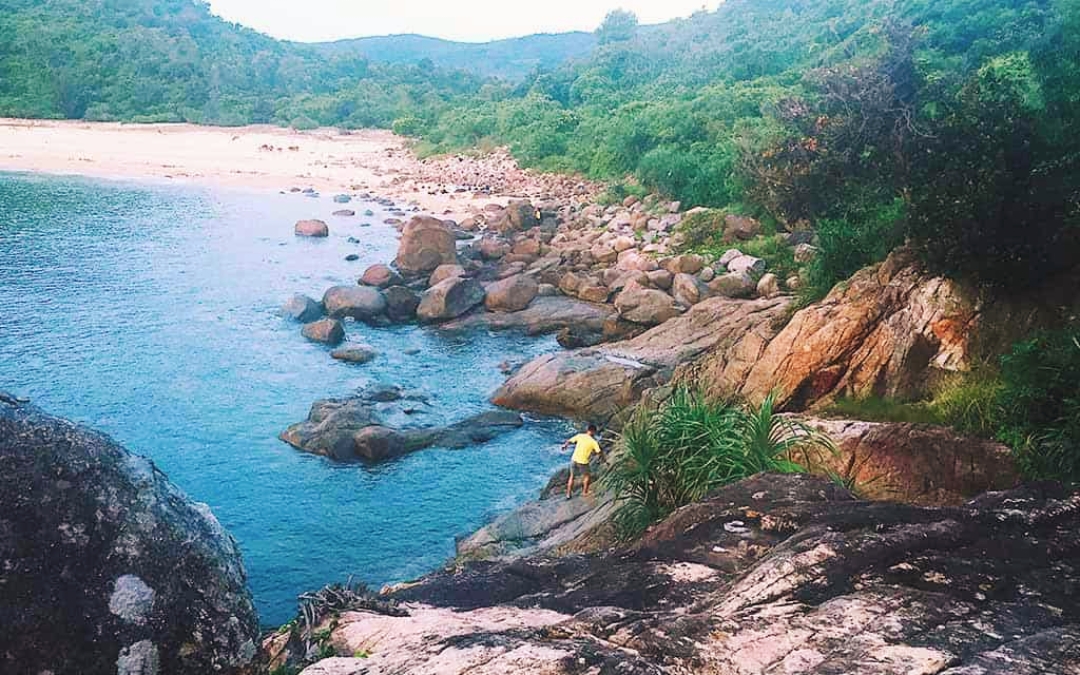
Eco-tourism projects in Van Village promise sustainable adventures.
Traveler Tips & Local Insights for Hai Van Pass Journey
To make the most of your Hai Van Pass adventure, preparation is key. From checking your vehicle to joining guided tours and capturing the best photo spots, here are essential tips and local insights every traveler should know.
Fuel & Vehicle Preparation
- Refuel beforehand: There are two petrol stations near the start of the pass from Da Nang. Always top up here before the climb.
- Vehicle condition: Check brakes, tires, and lights carefully, as the road has many sharp turns. Occasional maintenance works may also affect some sections.
- Protective gear & insurance: Always wear a helmet and ensure your travel insurance covers motorbike riding.
- Packing list: Sunscreen, raincoat/poncho, extra clothing layer for wind, water, snacks, and sturdy shoes are essential.
Road safety & driving skills
- The road is well-paved but filled with blind corners and sudden curves that require caution.
- Novice riders should avoid self-driving; instead, ride with an experienced Easy Rider guide.
- Traveling in a group of friends adds safety and support.
- Accident warning signs are placed along the route.
- While the views are alluring, be cautious on sharp bends.
Local insight: At the peak, you may encounter souvenir sellers who can be persistent—it’s okay to decline politely.
What travelers say
Visitors often describe the Hai Van Pass as a “deserted ribbon of perfection” with incredible coastal views and little traffic. Many highlight the safety and friendliness of Easy Rider guides, as well as the convenience of luggage transfer services. While not as remote as Ha Giang, most agree it’s one of the best coastal drives in Vietnam.
Best photography spots
The pass is a dream for photographers, with countless iconic stops:
- Hai Van Quan (Ancient Gate): Historic ruins with panoramic views.
- Cu Rua Rock: Famous lookout point over Da Nang beach.
- The Deadly U-Turn: A dramatic bend perfect for photos (but stop safely).
- Lang Co Beach & Lap An Lagoon: Golden sands and calm waters backed by Bach Ma Mountains.
- Vom Don Ca Bridge & Lonely Pine Tree: Quirky landmarks loved by travelers.
- Summit Views: On clear days, capture Da Nang, Son Tra Peninsula, Cu Lao Cham, and the endless coastline.
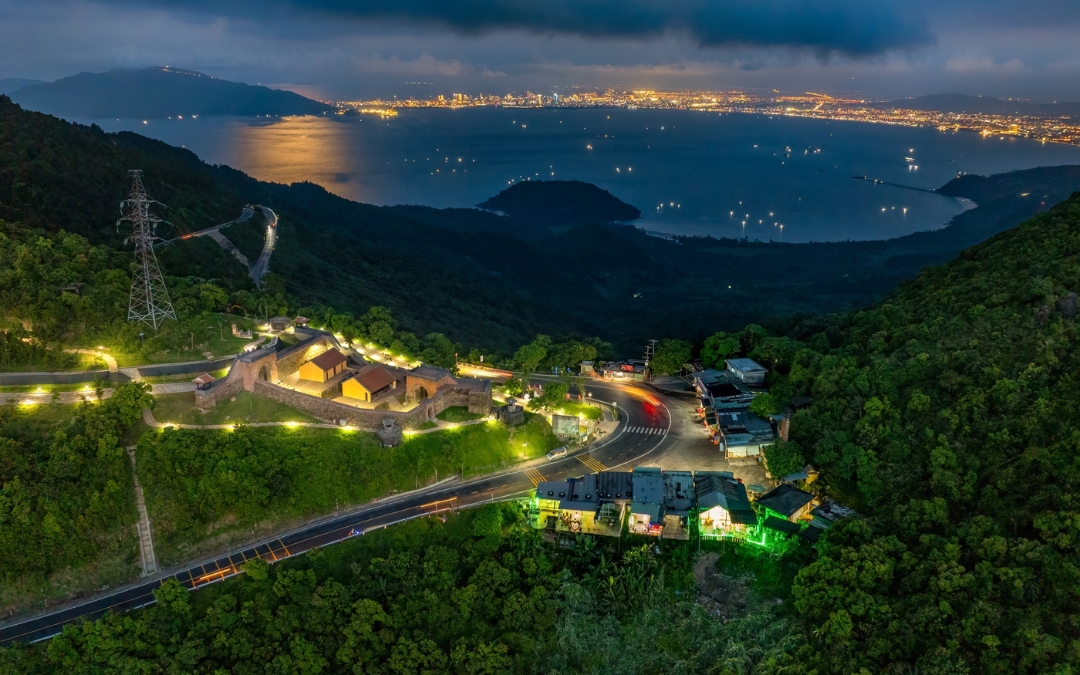
The ancient Hai Van Quan Gate glows beautifully at night with soft lighting.
Wrapping Up This Journey
The Hai Van Pass is a route, and beyond that! It’s an experience, an emotion, a story waiting to be lived. With its blend of history, nature, and raw beauty, it beckons travelers to embark on a journey of discovery. Whether you’re a history buff, a nature lover, or simply someone looking for a memorable drive, the pass promises a journey like no other.
Ready to explore the captivating beauty of the Hai Van Pass? Let Asia Pioneer Travel craft the perfect trip for you! Our expert guides and carefully curated itineraries ensure that your journey through the Hai Van Pass will be unforgettable. So, pack your bags, hit the road, and let the enchanting tales of Hai Van Pass unfold before you.
